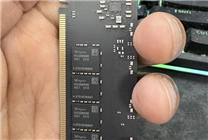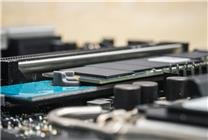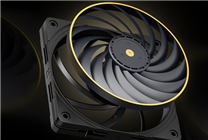SK Hynix Unveils High-Performance DDR5 A-Die Chip: 7200 MT/s Capable
Summary:
- SK Hynix introduces its next-gen DDR5 A-Die memory chip, code-named "X021," with a native frequency of 7200 MT/s.
- This chip is designed to supersede the existing 3Gb M-Die DDR5 modules.
- It aligns with upcoming Intel processor platforms, enhancing performance for future computer systems.
SK Hynix has recently made headlines in the tech community with the leak of its latest DDR5 memory chip, designatively marked as the "X021." This advanced component boasts a native frequency reaching an impressive 7200 MT/s, setting a new benchmark in memory technology.
The X021 chip, identified by the new part code "AKBD," represents the second generation of SK Hynix’s A-Die technology. This new chip is designed to replace the existing 3Gb M-Die DDR5 memory currently in use. The significance of this upgrade cannot be overstated, as it promises not just enhanced performance but also improved efficiency, making it a vital component for next-generation computing.
Key Features of the X021 Memory Chip
-
Increased Frequency Capability: The native frequency capability of 7200 MT/s positions the X021 as a frontrunner among DDR5 chips, offering users faster data rates and improved performance.
-
Compatibility with Future Platforms: This memory chip is designed to sync up with Intel’s upcoming Arrow Lake Refresh and Panther Lake processors. These future platforms are expected to support native DDR5-7200 memory, paving the way for high-speed data processing in modern computing environments.
- Significant Improvement Over Previous Generations: The X021 chip marks a notable evolution from earlier specifications. It outstrips current Raptor Lake’s DDR5-5600 and Arrow Lake’s DDR5-6400 capabilities, setting a trend for cutting-edge memory solutions.
What This Means for Future Computing
The development of the X021 chip is not merely a product of technological advancement; it reflects an overarching trend in the semiconductor industry that prioritizes higher speeds and efficiency. As computing demands continue to intensify, hardware manufacturers are bound to invest in next-generation memory solutions that cater to such needs.
The timing of this release is particularly strategic. With Intel planning to roll out processors that are compatible with faster DDR5 memory later this year, SK Hynix’s A-Die "AKBD" chip is poised to seamlessly integrate into these new systems. This symbiosis between memory chips and processors is crucial for maximizing overall system performance.
The potential applications of the X021 chip extend beyond general computing. Enhanced memory speeds are vital in various fields such as gaming, data science, and artificial intelligence, where latency can significantly impact performance. The introduction of this chip will likely accelerate innovation, enabling users to experience more responsive applications and processes.
Industry Implications
The unveiling of the X021 chip not only highlights SK Hynix’s position as a leader in semiconductor manufacturing but also brings to light significant shifts within the industry. The push for faster and more efficient memory solutions is becoming increasingly important, especially with the rise of high-performance computing demands across different sectors.
As more manufacturers channel investments into memory technologies, we can expect a broader range of products that leverage these advancements. Companies focusing on performance-driven applications will stand to benefit immensely from the enhanced capabilities offered by such cutting-edge memory solutions.
Conclusion
SK Hynix’s second-generation A-Die DDR5 chip, the X021, is a significant stride toward future-proofing computing technologies. With its acclaimed 7200 MT/s native frequency, this chip is poised to redefine what users expect from their memory solutions. As we look ahead, the symbiotic relationship between advancements in memory technology and processor capabilities will undoubtedly continue to shape the future of computing, making it an exciting time for both tech enthusiasts and industry professionals alike.
Keep an eye on the developments surrounding this chip as it marks the beginning of a new era in high-performance memory solutions, influencing not just computer systems but potentially transforming industries as a whole.








